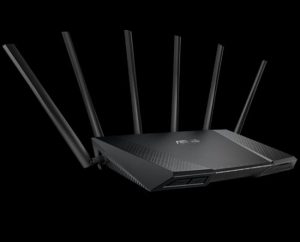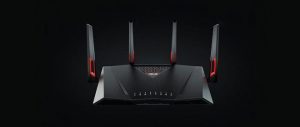Best Tp-link Wireless Routers (Fastest Dual-band Router ) You Need Today.
Life is becoming incredibly hard without a good internet connection. Nowadays, many routers promise good connectivity but end up falling short on their promise or even breaking down after a year.
That is why I have focused on TP-Link routers because of their reliability. Here are the 5 Best TP-Link Wireless routers
TP-LINK WIRELESS ROUTERS COMPARISON GUIDE
Router Name Max Speed Standard Ethernet Ports Price
[easyazon_link identifier="B01BKPGDP4" locale="US" tag="router007-20"]TP-Link Archer C7 Router[/easyazon_link] Up To 1750 Mbps 802.11ac 4x Ethernet Check Price
[easyazon_link identifier="B003Y5RYNY" locale="US" tag="router007-20"]TP-Link N450 Wireless[/easyazon_link] Up To 450 Mbps 802.11N 4x Ethernet
Check Price
[easyazon_link identifier="B00PDLRHFW" locale="US" tag="router007-20"]TP-Link AC1900 (Archer C9)[/easyazon_link] Up To 1900 Mbps 802.11ac 4x Ethernet Check Price
[easyazon_link identifier="B010UR8AM2" locale="US" tag="router007-20"]TP-Link AC2600 Router[/easyazon_link] Up To 2600 Mbps 802.11ac 4x Ethernet Check Price
[easyazon_link identifier="B01AK9TC0Y" locale="US" tag="router007-20"]TP-Link AC3150 Router[/easyazon_link] Up To 3200 Mbps 802.11ac 4x Ethernet Check Price
TP-LINK ARCHER C7 WIRELESS ROUTER (AC1750)
First on our list is the Archer C7. Do not let the price of this router fool you into thinking that it’s a low-end model. We tested it against other routers that cost significantly more, and its performance proved to be on par with those other routers if not better.
As the years go by, technology improves as is the case with this C7. It features a dual band Wi-Fi signal that lets you connect various types of devices to your network. The signals are strong and can penetrate concrete walls with ease.
We found this router to be reliable in that it does not reboot itself or drop connections. It delivers a powerful signal to all devices whether wired or wireless
Design and Features
The latest Archer C7 is a dual-band AC1750 router that uses a 720MHz CPU. It can reach speeds of up to 450Mbps on the 2.4GHz band and 1,300Mbps on the 5GHz band.
Design-wise, the C7 hasn’t changed from the TP-Link Archer C7 AC1750 Dual Band Wireless AC Gigabit Router we reviewed back in 2014.
It uses the same glossy-black enclosure, which measures 9.6 by 6.4 by 1.3 inches.
The rear of the router is home to three removable, adjustable antennas, four Gigabit LAN ports, a Gigabit WAN port, and two USB 2.0 ports. Joining them are an On/Off button, a Reset/WPS switch, a Wi-Fi On/Off switch, and two USB activity LEDs.
The front of the router has LED indicators for power, both radio bands, all four LAN ports, the WAN port, and WPS activity.
There’s also a noticeable lag between the time that you make a change and the time that the change is saved; in some cases I had to wait up to 30 seconds.
That said, it offers a wealth of basic and advanced settings. The main Status page has a list of settings on the left side and LAN, WAN, Wireless, and Traffic Statistic information in the center.
Off to the right is a detailed explanation for each setting. Network settings include WAN, LAN, MAC Clone, and IPTV options, and each radio band has basic wireless settings (SSID, Mode), as well as WPS, Security (WPA/WPA2 Person and Enterprise), and MAC filtering settings.
The Guest Network page allows you to create separate networks with limited access for guests, and it lets you set bandwidth control and access schedules for each network.
In Parental Controls you can create access schedules and compile a list of allowed websites for specific clients.
There’s also a separate Access Control option that allows you to create network-wide internet access rules.
Other settings include Advanced Routing, Bandwidth Control, Port Forwarding and Port Triggering, VPN Pass-Through and Firewall settings, and Dual-Band Selection, which lets you enable and disable each radio band.
In System Tools you can change time settings, run network diagnostics, update the router’s firmware, back up settings, and view system logs.
Installation and Performance
Installing the Archer C7 was easy. After connecting it to my desktop PC and the internet, I powered it up and typed http://tplinkwifi.net in my browser address bar to access the management console. I clicked the Quick Setup tab on the left and chose Auto-Detect.
The console found my internet connection and asked me if I wanted to run Concurrent (dual-band) Wi-Fi or just single band (2.4GHz or 5GHz, but not both).
I selected Concurrent and was taken to the wireless settings screen to configure security settings. Once configured, I was ready to go.
| [wp-svg-icons icon=”plus” wrap=”i”]Pros | [wp-svg-icons icon=”minus” wrap=”i”]Cons |
|
|
Conclusion
The Archer C7’s user interface could use an update, however, and its file-transfer performance could be better.
That said, it’s the fastest dual-band router in its class and our Editors’ Choice for budget routers.
TP-LINK N450 WIRELESS WI-FI ROUTER
For its price, the N450 is a good router. It is simple to set up; no configuration is needed. Once you unbox this device, simply plug in the power cord and power it then uses the SSID and password provided on the S/N label.
Once it’s up and running will provide you a good network reception at home with or without concrete walls. Its dual band network allows interconnectivity between various devices. So whether you have tablets, laptops, smartphones and other devices, you are sufficiently covered with this N450. This router also supports HD gaming and HD video streaming.
| [wp-svg-icons icon=”plus” wrap=”i”]Pros | [wp-svg-icons icon=”minus” wrap=”i”]Cons |
|
|
Three words: high performance, extreme functionality, and high speeds, need another selling point? The TP-LINK TL-WR940N V3 is one of the best wireless routers that is a quality and dependable product. It is fast, simple to use and for anyone to install. Order you TP-Link router today.
TP-LINK AC1900 WIRELESS WI-FI ROUTER (ARCHER C9)
The Archer C9 is similar to the Archer C7, but our experience with both these routers revealed that the C9’s signal coverage was more superior to the C7’s.
The C7 is a great device and was able to cover every room of the 4,000 square foot house and every acre of the acre property, but the C9 edged it because its signal was much stronger.
Overall, the C9 will make its buyer extremely. You will be able to do bandwidth heavy tasks like HD streaming and HD online gaming with no connectivity issues.
This Archer C9 impressed us with its reliability to handle multiple devices without buffering issues and zero network interruptions.
Unlike the rather aggressive, angular styling that D-Link and Netgear have opted for on their high-end routers, TP-Link has kept things modest with the Archer C9.
Its front is a smooth, curvy, glossy expanse of white with an elegant silver-painted stand propping it up from behind and three matte white aerials sticking out its top.
If you’re an Apple hardware fan then it’s the clear choice for you.
Elegant it may be but it’s not necessarily the most practical. The stand means you can’t lay the router flat or mount it on a wall.
Moreover it isn’t sure footed enough and will fairly easily tip over. For most households these will all prove to be fairly minor points as once installed you’ll leave the router well alone, but its tendency to topple over definitely proved a little frustrating during testing.
Otherwise it’s a clean bill of health as the three aerials are removable, yet sturdy, and are easy to position.
The lights on the front for indicating power, Wi-Fi connection, Internet connection and the like are all easy to see and tell apart – unlike the uniform rectangular lights of the Netgear R7500.
Round the back the selection of connections is nothing special but ticks all the crucial boxes, and again they’re clearly labelled.
From left to right we’ve got the USB 2.0 port, WPS and reset button, the Ethernet socket that goes to your modem, four more gigabit Ethernet ports for the rest of your network and the power socket and switch.
On the side is a second USB port, and this time it’s USB 3.0 – ideal for sharing files on your network from a USB drive – while the one on the rear is only USB 2.0, but it’ll do for sharing printers.
The main event with this router is of course its AC1900 Wi-Fi capability.
That amounts to up to 600Mbit/s transfers over 2.4GHz and 1,300Mbit/s over 5GHz.
As ever you’ll only achieve the latter if you have compatible triple-antennae hardware, which is still pretty rare.
Most laptops and phones don’t have it – most stop at dual-aerial arrangements – which only really leaves the option of a few PC cards or having a router-to-router setup where the speed of the AC1900 connection is used to span the gap between two remote buildings, for instance.
All that said, the triple aerial setup makes for potentially better beam forming and multi-device throughput rates, so there are still benefits for users of non-AC1900 products.
| [wp-svg-icons icon=”plus” wrap=”i”]Pros | [wp-svg-icons icon=”minus” wrap=”i”]Cons |
|
|
Three words: high performance, extreme functionality, and high speeds, need another selling point?
The TP-LINK TL-WR940N V3 is one of the best wireless routers that is a quality and dependable product.
It is fast, simple to use and for anyone to install. Order you TP-Link router today.
TP-LINK AC2600 WIRELESS ROUTER (ARCHER C2600)
Fourth on our list is the AC2600, which is a great router for replacing old worn out routers. It ships quickly and set up is seamless.
Once you connect it, you will notice an increase in speed and responsiveness of your network, and you will also be able to connect more devices.
With this router, you will enjoy a high-performance stream of 4K HD videos.
Its 1.4 GHz dual core processor provides a smooth performance and ensures immediate response without lags and freezes.
If you have children in the house, you can set up time limits and parental control guidance.
What We Liked
| [wp-svg-icons icon=”plus” wrap=”i”]Pros | [wp-svg-icons icon=”minus” wrap=”i”]Cons |
|
|
TP-LINK AC3150 WIRELESS WI-FI ROUTER(ARCHER C3150)
Fifth on our list is the AC3150. This router is ideal for providing high-speed bandwidth. It uses 4-stream to add data streams to each band and NitroQAM for processing data faster.
These two technologies increase the router’s WI-FI speed by 25%. Its four dual band antennas deliver these strong signals up to an area of 10,000 square feet.
With those fast speeds and excellent network coverage, you can enjoy bandwidth intensive tasks from anywhere in your house.
It also features 2.0 and 3.0 USB ports for sharing media across your home network. Its web interface is easy and intuitive for use.
| [wp-svg-icons icon=”plus” wrap=”i”]Pros | [wp-svg-icons icon=”minus” wrap=”i”]Cons |
|
|
FINAL WORDS
- TP-Link routers have proven themselves over the years. Not only are they long-lasting but they provide high-speed network coverage to go with their groundbreaking features.
- This list will help you filter through the over-saturated market of wireless routers to help you find the best router for your home.
- Firmware update is a little bit complex for the average user.

Hi! I am Martha D. I have over 20 years of experience in troubleshooting technical problems. I created Technipages so I could share my adventures in troubleshooting, and
I hope readers find the solutions posted on this site as useful as I do











